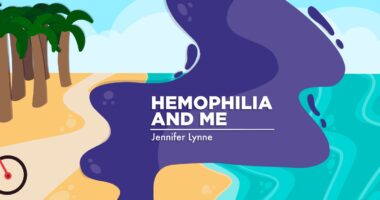Missing persons: Women and girls with hemophilia
Finally, researchers have estimated how many women remain undiagnosed

When I tell people I’m a woman with hemophilia, I’m often met with the same response: “Well, that is really unusual. It’s rare for women to have hemophilia!”
This ubiquitous misconception is the bane of every female hemophiliac’s existence. It often stands in the way of women and girls receiving a proper diagnosis and the care they need and deserve.
In January 2020, I had the pleasure of interviewing hematologist Carol Kasper for this column. In it, I highlighted the challenges women with hemophilia face.
Kasper, now retired, has long been an advocate for women with bleeding disorders. She worked to quantify how many female carriers of hemophilia existed and which ones showed signs of having the condition themselves. In addition, she sought to figure out how many female carriers had low enough levels of factor VIII (FVIII) or factor IX (FVIX) to require treatment.
How do we quantify the missing women?
Today, more women and girls are being diagnosed with hemophilia, and doctors are moving away from the problematic term “symptomatic carrier” for those whose clotting factor levels are less than 40%. (Hemophilia is typically diagnosed when these levels are lower than 40%.) The work of Kasper and many others paved the way for women and girls with hemophilia to obtain a better diagnosis.
But as I learned more, I wanted to write about the missing women with hemophilia — those lacking diagnosis and care. It seemed critical to bring attention to those not on the radar, who remain most at risk for serious bleeding complications, since neither these women nor their providers understand that they have hemophilia. Based on my calculations, there were potentially hundreds of thousands (or more!) undiagnosed women and girls with hemophilia who were in danger.
Yet I was frustrated, as I didn’t know how I could convey the breadth of the issue. I knew deep down that high numbers of undiagnosed women existed. But my calculations were based only on small bits of information I could glean from the few researchers, including Kasper, who had written about women with hemophilia. However, none of them had tried to quantify the number of undiagnosed women.
While I was sure I was correct, there was almost no evidence to back me up. I couldn’t look like I was jumping to conclusions.
New research mentions missing women
That’s why I’m excited to share an article published last March in the journal Haemophilia. Finally, there are evidence-based estimates of how many women and girls with hemophilia remain undiagnosed!
According to the article, “there are over 1 million females predicted to be affected by haemophilia worldwide, of whom most are likely not receiving timely or adequate care.” Let that sink in. More than 1 million women and girls, most not on any medical radar. I’m grateful to the researchers for including this information in their article, which focuses on female hemophilia carriers and heavy menstrual bleeding.
The researchers also acknowledge issues similar to those addressed by Hemophilia News Today columnists: Women continue to struggle to obtain a proper diagnosis, access to care, and acknowledgement that they have hemophilia.
The article also notes that, of the estimated number of women and girls with bleeding in the U.S., only 18% have been seen at federally funded hemophilia treatment centers. It’s clear that many women with hemophilia are not accessing appropriate care or treatment.
More progress is needed
Although much progress has been made, the fight has barely begun. Women around the globe struggle to gain validity as they suffer from heavy menstrual bleeding, bruises that won’t heal, joint pain and swelling, muscle bleeds, and more. They limp along not even knowing they meet the criteria for a diagnosis and medical intervention, such as factor VIII or IX replacement products. Those would greatly improve their quality of life.
I’m thankful to the hematologists and researchers working tirelessly to correct misconceptions in scientific and clinical communities. They’re removing massive barriers that have historically blocked women with hemophilia from accessing care.
That brings me back to the beginning: It’s so important to get our facts right. Women with hemophilia aren’t actually uncommon; they’re just hugely underdiagnosed. We must correct misconceptions by medical professionals and patients alike to pave the way for improved access to diagnosis and care. Then we’ll be able to find all the missing women with hemophilia, and I cannot wait to see this reality shift.
Note: Hemophilia News Today is strictly a news and information website about the disease. It does not provide medical advice, diagnosis, or treatment. This content is not intended to be a substitute for professional medical advice, diagnosis, or treatment. Always seek the advice of your physician or another qualified health provider with any questions you may have regarding a medical condition. Never disregard professional medical advice or delay in seeking it because of something you have read on this website. The opinions expressed in this column are not those of Hemophilia News Today or its parent company, Bionews, and are intended to spark discussion about issues pertaining to hemophilia.







Leave a comment
Fill in the required fields to post. Your email address will not be published.